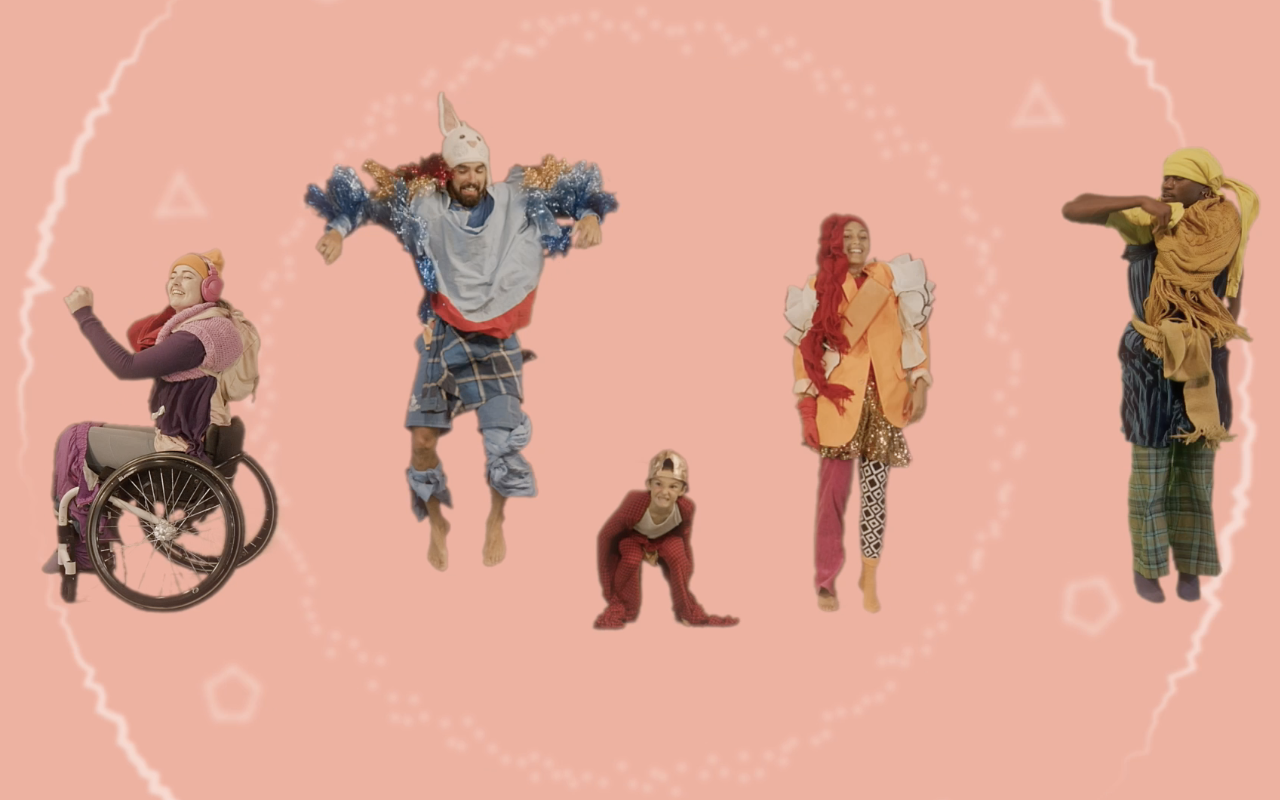
Getting Dressed Films by Second Hand Dance
Dancing with disability
As a trained dancer and choreographer, Rosie Heafford learned the hard way how to deal with an invisible disability.
Second Hand Dance is a company that creates shows for children and adults. We’ve toured from the UK to Europe, China, Canada, and the USA creating beautiful, sensory live dance experiences with a rich visual and participatory aesthetic such as We Touch We Play We Dance, a celebratory performance for 0–3-year-olds.
We’ve also expanded into the digital realm to create dance films for young audiences such as Getting Dressed Films and Grass Films.
Performing at festivals and showcases has been vital to our development and success as an organisation. And many festivals are wonderfully welcoming. Often weeklong events, they offer a chance to see several shows a day from around the world alongside breakfast talks, networking lunches and symposiums.
For delegates with disabilities (visible or otherwise) or chronic illnesses this can present an uncomfortable choice: miss out on the fantastic opportunities and experiences, or attend at significant personal, physical cost.
Invisible disabilities
According to a US survey, of the estimated billion people worldwide living with disabilities, 74% do not have a visible impairment that immediately identifies them as disabled. As invisible disabilities are by their nature hidden, you may not be able (or want) to declare them.
I ‘came out’ as disabled in a blog in September 2020. I had been disabled for a while, but my journey up to that point had been private. It was 2013, the year that Second Hand Dance was formed, when I experienced the first symptoms: pain in my fingers and difficulty standing or walking for long periods. The doctors thought it was arthritis. I was terrified. As a dancer and choreographer, it felt like the earth was dropping away from beneath my feet.
By 2017, the increased pain and fatigue was affecting my ability to walk, work, socialise, cook, shower and generally function. I pursued endless medical and holistic avenues with the hope of curing myself.
My understanding of disability was very different then. I was at the point of leaving dance because I felt ‘I didn’t have what it takes’, particularly when it came to festivals.
‘No pain, no gain’
Through tears and awkwardness, I admitted to my producer to the toll that work, and particularly travel, was taking. That I was hiding the pain and fatigue of being unable to work for two weeks or more after a project ended. That travelling to a showcase often wiped me out for a week.
Since then I have gone through many highs and lows, and received generous support in reframing my identity in the social model of disability towards understanding the barriers I experience. These barriers can be removed, and through Access To Work and Arts Council England funding, I have a travel grant and work with a team who can support me or step in to deputise if needed.
It is, however, important to acknowledge the huge journey it can take for someone to understand and accept a changing condition, especially when the phrase ‘no pain, no gain’ is a dance industry standard.
Identifying ways to support artists with access needs
Acknowledging my disability to family, friends and colleagues was only the beginning. I still have to perform my role as Artistic Director with attendance at festivals and showcases part of that. But the intense conditions and expectations of working in festival environments can impact on levels of health and pain levels, sometimes excluding me from participating.
It doesn’t have to be that way. When I had to pull out of a festival, Surf the Wave commissioned research from us at Second Hand Dance to identify ways to support artists with access needs.
The first phase of the research took place in 2020. We conducted interviews with individuals across the UK cultural sector – artists, festival directors, producers, development directors, choreographers and chief executives. 70% of those interviewed identified as disabled.
Key recommendations
The research was a small start but there are some key recommendations for festivals and showcases:
• Ask about access requirements at the point of booking artists, staff and delegates. Have a key contact to support anyone with a disability before, during and after the festival.
• Release schedules at least 6 weeks in advance, but ideally up to 3-6 months so those with disabilities can plan adequately and apply for funding to cover access needs.
• Think about the timing of networking events: early morning and evening events are often more difficult for those with disabilities.
• Build in rest times for both artists and delegates as part of the schedule to avoid disabled artists having to miss out.
• Provide quiet/rest spaces at key venues.
• Offer comfortable seating or lie-down options with mats and cushions during networking events or talks.
• Provide information on the venue, local terrain and services: what is the seating like? Is it hilly or cobbled? Are taxis easily available?
• If possible offer bursaries to cover access requirements as not everyone will be able to apply for Access To Work funding.
• Make companion tickets easy to buy, without proof of disability.
Our research and its recommendations are just a starting point. More needs to be done to understand and improve accessibility. Second Hand Dance is now working globally supporting the Assitej Access Committee in its thinking and planning.
Having lived with invisible disability, and with festivals and showcases such an important part of my working life, I hope that event organisers take note and put accessibility and inclusion on their agenda for invisible and visible disabilities.
Rosie Heafford is Artistic Director of Second Hand Dance.
Join the Discussion
You must be logged in to post a comment.